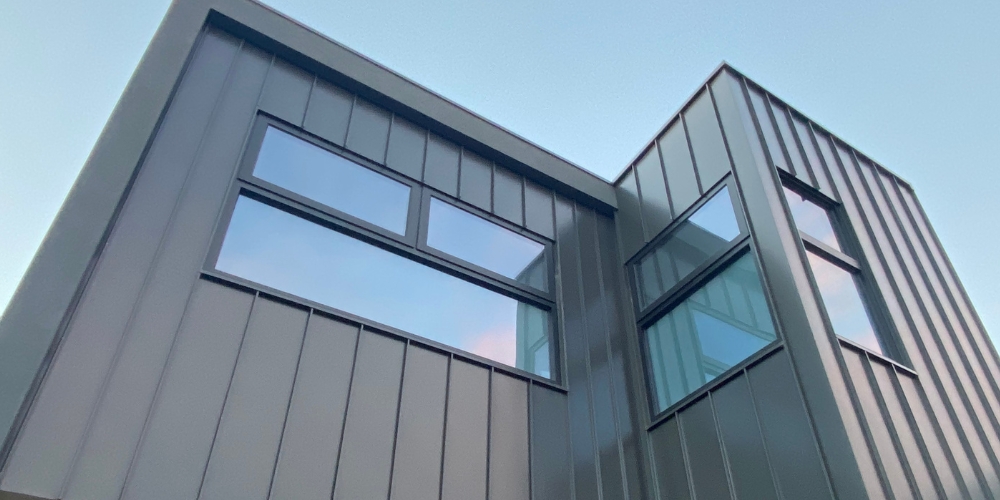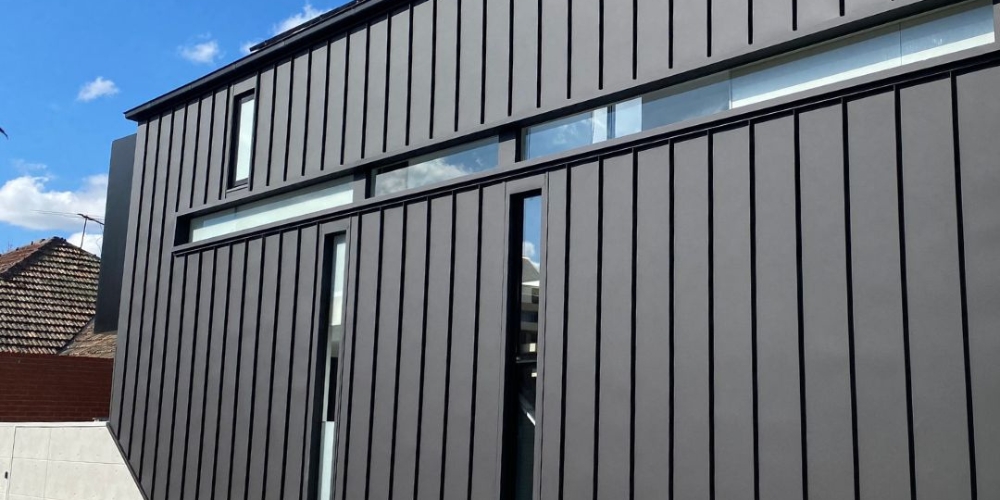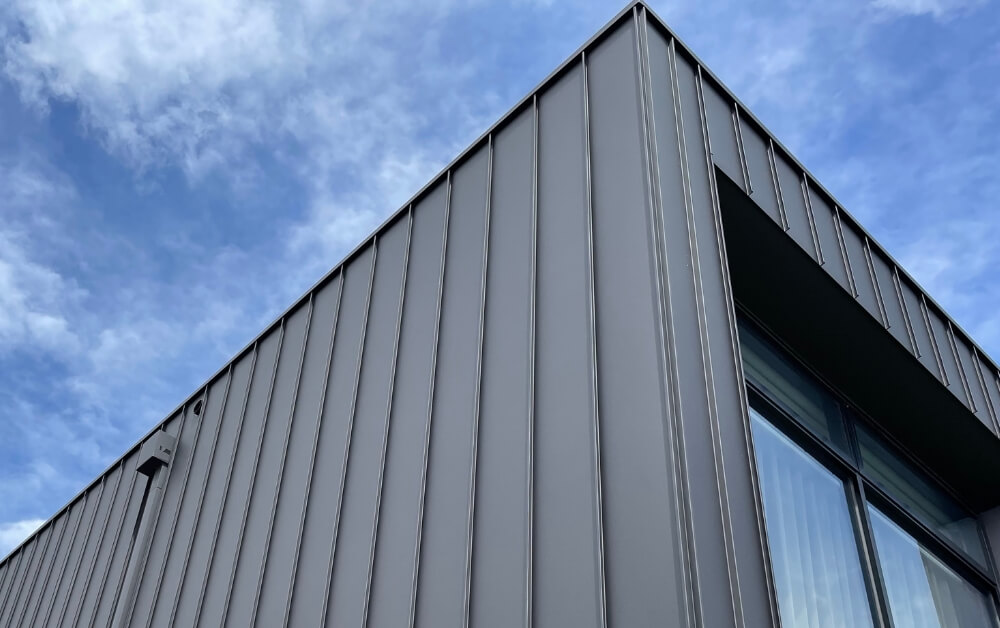Snap Lock Cladding vs. Traditional Cladding: A Comparison of Durability, Efficiency, and Design
You’ve likely seen outer layers on buildings and homes in Melbourne – these are called cladding. This structural design has been the growing trend among properties in Melbourne because of its distinctive features and benefits.
But throughout the years, these unique additions to our homes were also revolutionised by technology.
As roofing and cladding experts in Melbourne for almost two decades, we have witnessed the evolution of these protective layers.
But which is better between the two?
Read on as we compare Snap Lock Cladding and traditional cladding in terms of durability, efficiency, and design. Whether you live in Melbourne, are a homeowner, or are interested in house construction improvements, we’ll walk you through the comparison so you can make an informed decision about your property.

Lance Mathews
In This Article

What is Snaplock Cladding?
Snap Lock Cladding is a metal cladding system used in building construction. It is distinguished by interlocking panels that firmly snap together after installation, avoiding the need for visible fasteners such as screws or nails. The panels often include male and female profiles, allowing them to connect quickly and form a tight, weather-resistant seal.
Seamless Interlocking Design
Snap Lock Cladding’s interlocking design is distinguished by its elegance and simplicity. The panels attach effortlessly, resulting in a polished and secure surface without the visual distraction of exposed screws or fasteners.
Hidden Fasteners for Polished Finish
Snap Lock Cladding embraces a contemporary aesthetic by concealing its fasteners within the interlocking structure. This design choice not only assures a clean and modern appearance but also demonstrates a devotion to a sophisticated and polished finish.
Weather-Resistant Resilience
Snap Lock Cladding is built to last and is visually appealing. It acts as a steadfast defence against various weather conditions, providing your property with the certainty of long-term protection from the elements.
Easy Installation
Snap Lock Cladding installation is both efficient and reliable. The simple snap-together mechanism not only ensures a tight fit but also accelerates the installation process, emphasising the user-friendliness of this modern cladding solution.
Applications and use cases
Residential Exteriors
Snap Lock Cladding gives a modern touch to house exteriors, offering homeowners an appealing, long-lasting solution. Its elegant form and weather-resistant qualities make it excellent for protecting properties and increasing curb appeal.
Commercial Buildings
Snap Lock Cladding is a popular choice for commercial buildings because of its adaptability and visual appeal. From commercial buildings to retail locations, it provides a clean and contemporary appearance while providing strong protection against changing weather conditions.
Architectural Accents
Snap Lock Cladding can also be an architectural accent and provide complete building coverage. Whether utilised to create focal points on facades or to provide texture to specific regions, its architectural versatility enables architects to express their creativity in design components.
Industrial Facilities
Snap Lock Cladding is durable and efficient, making it ideal for industrial operations. Its capacity to withstand extreme weather conditions makes it ideal for factories, warehouses, and other industrial facilities requiring functionality and a polished appearance.

What is a Traditional Cladding?
Traditional cladding is the traditional way of attaching an outer coating to the exterior of a structure for both functional and aesthetic reasons. Unlike modern cladding systems, traditional cladding methods frequently use visible fasteners, such as screws or nails, to hold the cladding material to the building structure.
Key Characteristics of Traditional Cladding:
Exposed Fasteners
Traditional cladding systems often have visible fasteners that hold the cladding material to the building. This can give the exterior a more distinct and textured appearance.
Various Materials
Traditional cladding can comprise various materials, including wood, vinyl, metal, and fibre cement. Material selection is influenced by aesthetic preference, budget, and local climate.
Installation Techniques
Traditional cladding installation frequently requires attaching individual panels or boards to the building’s framework. This may necessitate precise alignment and spacing to achieve a consistent and secure attachment.
Aesthetic Versatility
Traditional cladding systems provide a variety of design alternatives, allowing for different looks depending on the material, colour, and pattern used. Its adaptability makes it appropriate for a wide range of architectural styles.
Applications and use cases
Residential Construction
If you’ve ever wondered what gives homes that special touch, it’s usually Traditional Cladding. It has always been popular in residential buildings, providing protection and aesthetic appeal. Consider it the exterior’s fashion statement, with materials such as wood, vinyl, or fibre cement to fit your preferences.
Commercial Buildings
Consider the slick appearance of an office or business. The culprit is traditional cladding. It can be used in various settings, including office buildings and neighbourhood stores. Architects enjoy experimenting with textures and appearances to create a distinct vibe for each commercial space.
Historical Restoration
Have you ever seen a wonderfully preserved historical building? Traditional cladding contributed to the preservation of its original attractiveness. When repairing classics, we frequently use traditional materials such as wood or stone, complete with visible bolts, to stay true to the structure’s roots.
Industrial Facilities
Traditional cladding stands out in the rough industrial world. Due to metal cladding, warehouses and factories frequently have a tough appearance, which provides a strong barrier against weather and other environmental hazards.

Snaplock vs Traditional Cladding - Key Differences
Durability
Snap Lock:
Snap Lock Cladding is highly durable. The interlocking pattern creates a sturdy, weather-resistant barrier that protects the building from external influences. The seamless connection between panels adds to long-term performance.
Traditional:
Traditional cladding, while durable, might vary in longevity depending on the material used and the installation method. The presence of exposed fasteners may influence the overall robustness.
Efficiency
Snap Lock:
Snap Lock Cladding is well-known for its ease of installation and long-term durability. The snap-together method simplifies the installation procedure, potentially lowering labour expenses. Furthermore, the hidden fasteners contribute to a sleek and efficient appearance.
Traditional:
Traditional cladding’s efficiency varies depending on the installation method and fasteners utilised. The visibility of fasteners may complicate the installation procedure and reduce overall efficiency.
Design flexibility
Snap Lock:
Snap Lock Cladding provides extensive design flexibility. The interconnecting panels are available in various materials, finishes, and profiles, giving architects and homeowners multiple aesthetic alternatives. The concealed fasteners add to a sleek and sophisticated appearance.
Traditional:
Traditional cladding also offers versatility, with a wide range of accessible materials and designs. However, the visibility of fasteners may influence the overall appearance and play a role in specific design preferences.
Which is Better Between the Two, Then?
Most of the time, as part of our goal to provide our clients with the best roofing and cladding solutions, we ask them to keep their needs and priorities in mind when choosing between a snaplock and traditional cladding.
Snap Lock Cladding is an excellent solution for people who want a modern, streamlined appearance. Its seamless interlocking design and hidden fasteners lend to a streamlined appearance. Snap Lock may be the way to go if you value design flexibility, installation efficiency, and a modern appearance.
On the other hand, Traditional Cladding has its own set of advantages. It has a timeless appeal thanks to its diverse materials and styles. If you prefer a classic design and don’t mind visible fasteners, Traditional Cladding is a durable and dependable solution.
Frequently Asked Questions
Snap Lock Cladding is noted for its low-maintenance properties due to its seamless design and long-lasting materials. Traditional cladding may require more upkeep, particularly if exposed fasteners must be checked regularly.
Yes, Snap Lock Cladding is adaptable and suited for various applications. It is widely utilised in residential and commercial structures, offering a modern appearance and weather-resistant protection.
Snap Lock Cladding’s snap-together construction may allow for a faster installation method. Traditional cladding may take longer to install, especially if it contains visible fasteners and requires intricate installation methods.
Conclusion
When it comes to choosing between Snap Lock and Traditional Cladding, it’s all about what fits your needs best. Snap Lock is a strong contender if you like that modern, sleek look and want an easy installation. On the flip side, if you’re a fan of classic styles and are okay with visible fasteners, Traditional Cladding might be the perfect match.
Remember, the best choice depends on your project’s vibe and what you value most – contemporary aesthetics, efficiency, or timeless charm. Our mission is to help you find the right roofing and cladding solution that ticks all your boxes. If you have questions or need guidance, we’re here to assist you with the perfect cladding for your space.

